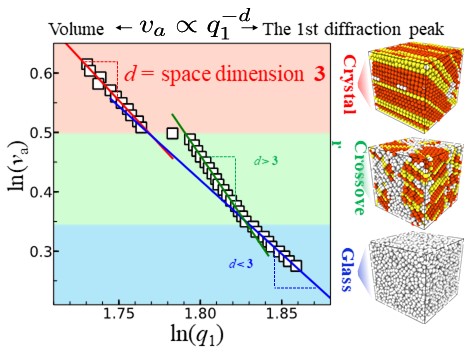Many glasses exhibit fractional power law (FPL) between the mean atomic volume va and the first diffraction peak position q1, i.e. νa∝q1−d with d ≃ 2.5 deviating from the space dimension D = 3, under compression or composition change. What structural change causes such FPL and whether the FPL and d are universal remain controversial. Here our simulations show that the FPL holds in both two- and three-dimensional glasses under compression when the particle interaction has two length scales which can induce nonuniform local deformations. The exponent d is not universal, but varies linearly with the deformable part of soft particles. In particular, we reveal an unexpected crossover regime with d > D from crystal behavior (d = D) to glass behavior (d < D). The results are explained by two types of bond deformation. We further discover FPLs in real space from the radial distribution functions, which correspond to the FPLs in reciprocal space.

原文链接:https://www.nature.com/articles/s41467-020-15583-4